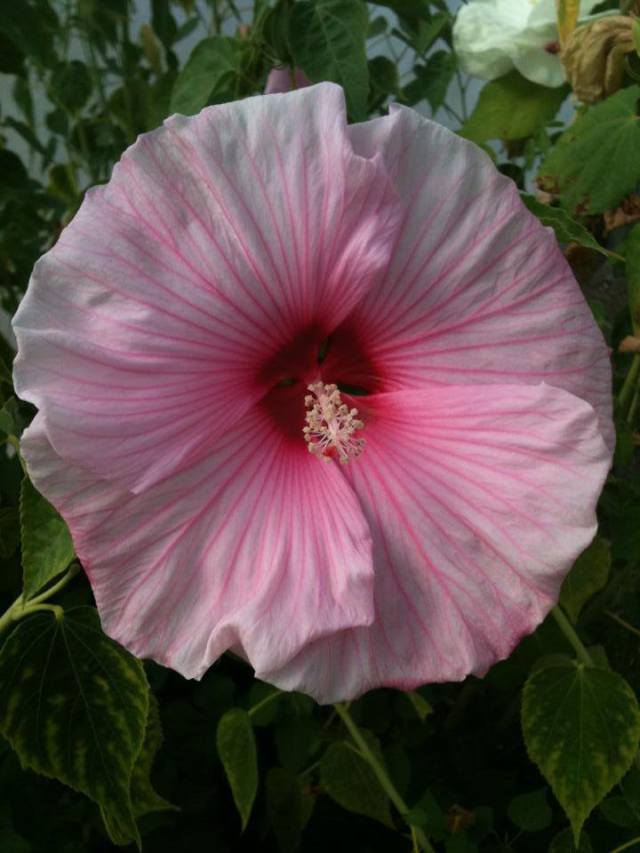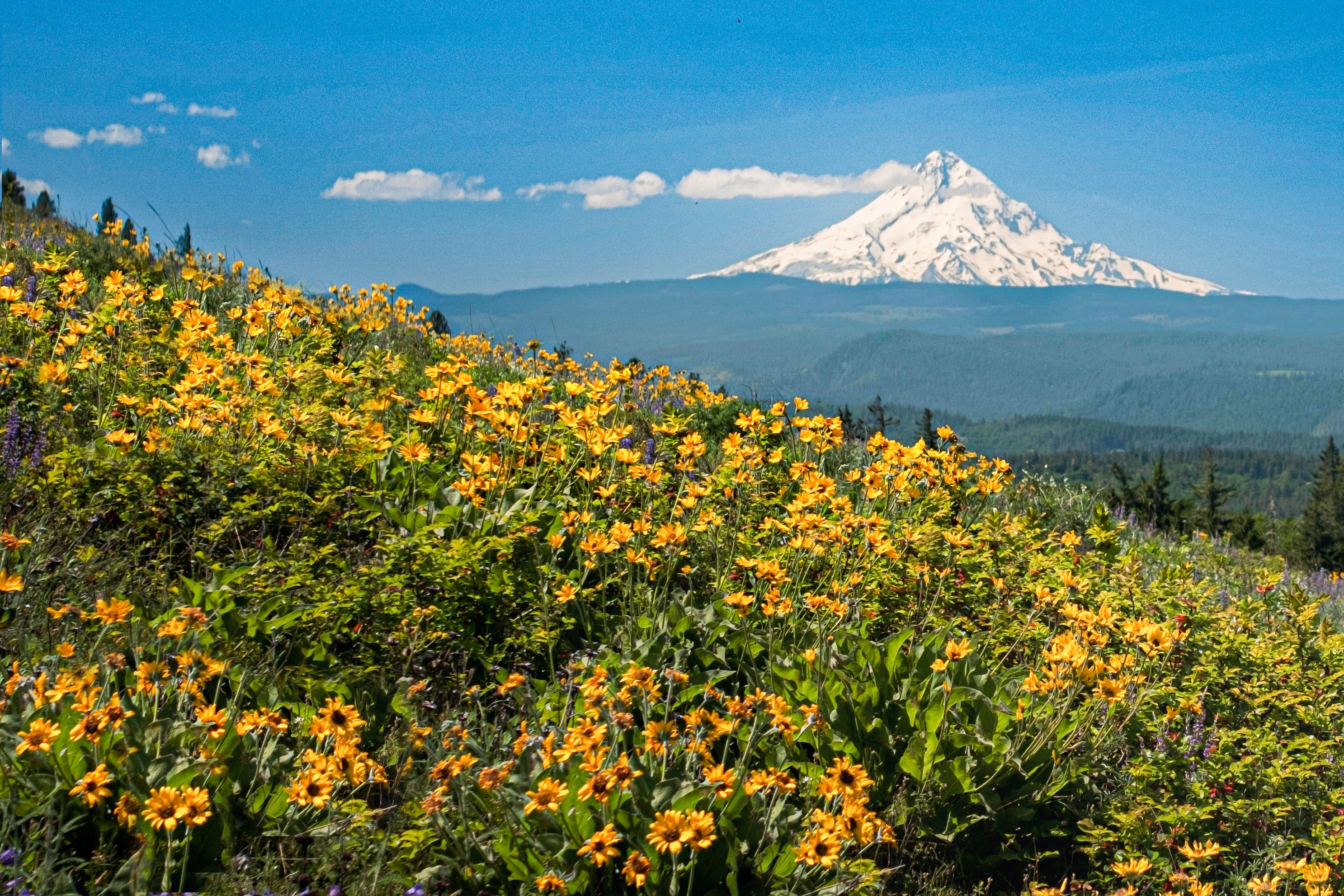Rose Mallow: Hardy Hibiscus For Tropicalesque Portland Gardens

Sweet Caroline rose mallow
Image: Bruce Bailey
Uncommon in the Portland area, this glorious perennial plant is a genuine attention-grabber in the garden. Between the tropical-looking foliage and the huge, dramatic flowers, it's impossible to ignore. In the words of Plant Delights Nursery's Tony Avent: "If you like your flowers 'a little on the tacky side,' then rose mallow is for you.
Mainly native to the eastern and southeastern US, rose mallow (Hibiscus moscheutos) has bright, wide-open, tissue-paper flowers reminiscent of tropical hibiscus (H. rosa-sinensis) flowers but larger. They grow naturally in open, sunny wetland and riverbanks so good moisture is required. Rose mallow is a fine hummingbird attractant and looks dramatic planted near water features and amidst cannas, bananas, palms and other tropical-inflected plantings.
Since Portland summers are dry, it's best to place hardy mallow near other areas that receive regular summer water, such as a vegetable garden or anywhere that's convenient to the end of your hose: it will reward you with fast growth and huge, tropical-looking flowers from July through September. If growing in a pot, place the pot in a drip dish or cache pot and top it up with water (and fertilizer) regularly during the growing season.
In the wild, rose mallow is generally pale pink with a darker, nearly red eye but interbreeding with other species such as scarlet mallow (H. coccineus and its brethren) has produced hybrids with huge red flowers, as well as white, pink, mauve and even purple flowers, often with a red eye in the center. There are forms with coppery or burgundy foliage, as well.
Flowers range from about 6" across to over a foot in diameter, appearing mid-July through September in our area.
More petite forms - to just 3' tall or so - exist but wild rose mallow grows to 6-8' tall and nearly as wide in time. Plants die down to the ground in winter, leaving dead brown stems: not the most fetching look. Underplant with creeping evergreen ground cover blue star creeper (Isotoma fluviatilis) or moisture-loving, shade-tolerant evergreen grasses like Acorus or sedges like Carex comans or C. albula.
Stems are slow to rise in spring, usually appearing in April or so. Apply organic, balanced granular fertilizer when you see the first shoots appear.
Locally, Bruce Bailey of Heavy Petal Nursery in Moses Lake, WA sells at least 15 different cultivars. Heavy Petal Nursery is a 5.5-hour drive from Portland but if you're into rose mallows, it would be a worthy pilgrimage to attend the nursery's annual, late July Hot for Hibiscus event. But fret not, if you missed it this year: contact Bruce for more information (509-760-7848) or check out Heavy Petal Nursery on Facebook.
Plant Delights Nursery in Raleigh, NC, also carries a wide range of species and hybrids. At least a dozen species and hybrids are available, native both to North America and Asia. Check out Plant Delights' list of hardy hibiscus here.




